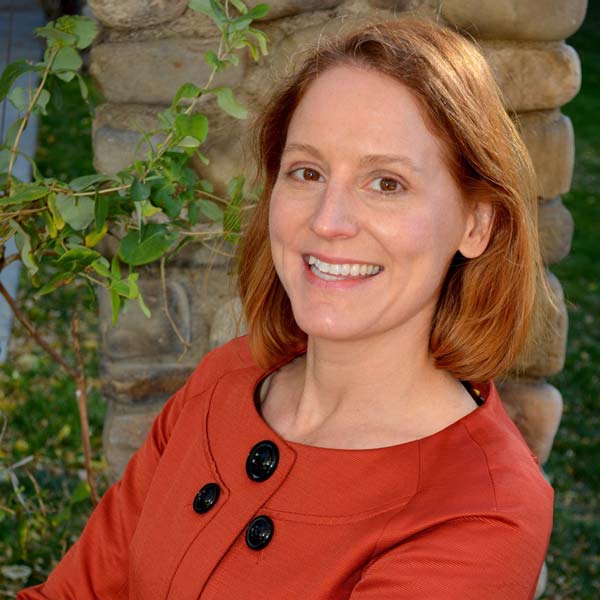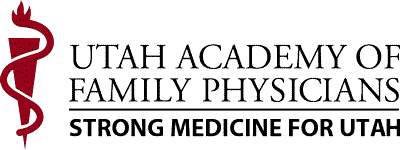Jeff Chappell, M.D., is the Medical Director of the Wayne Community Health Center, a federally qualified health center located in Bicknell, Utah, the most remote health care delivery site in our state. Dr. Chappell has served in the Bicknell area for over 30 years and has a large geriatric panel. Over time, he had begun to experience a clear, disincentive need to see medically complex patients … the PA’s (physician assistants) would see lots of colds, sore throats and UTIs, and their numbers looked better – my numbers were lower.”
In 2018, Dr. Chappell’s practice started participating in an alternative payment model with Medicare that pays the clinic to focus on preventive care and deliver most care to Medicare patients in the family practice clinic setting. By investing in high quality care coordination and nursing contact with patients at risk for worsening health, the practice prevents unneeded hospital visits or expensive specialty services. These savings support payment to the health center for staff that helped Dr. Chappell and the PAs manage their Medicare patients with complex health needs more closely. The switch in focus to paying for prevention also enhanced Dr. Chappell’s experience of his leadership role as a highly-trained family physician to his system: “My value is as a resource to the mid-levels. In a few minutes of discussion [with the PA] I can avoid a $1,500 MRI or a $3,000 ER visit. My value to my organization has increased.”
What if all payers paid for primary care prevention and fostered value for the experience and broad scope of family medicine physicians leading their teams?
Background
Relative to other developed western nations, the United States underspends health care dollars in primary care. On average, the United States spends 5%-7% on primary care as a percentage of total health care spending compared to Organization for Economic Co-operation and Development (OECD) countries that average 14% spending. (Jabbarpour, et al., 2019)
Utah has historically benefitted from better health outcomes and lower than average healthcare costs compared to national averages but has been seeing rising costs in the past few years. The Kem Gardner institute reported in January 2019, “Utah’s health care expenditures are growing at one of the fastest rates in the country.” (Summers, 2019) Utah has also seen rising rates of preventable conditions like prediabetes that are now equal to nationwide rates. (Public Health Indicater Based Information System (IBIS), 2020)
Investment in delivery of primary health care will bend the curve. The National Academies of Science, Engineering, and Medicine (NASEM), arguably the most highly respected scientific body in the nation, published a report this summer (2021), “Implementing High-Quality Primary Care: Rebuilding the Foundation of Health Care.” (McCauley, Meisnere, Robinson, & Phillips, Jr., 2021) The report says, “Primary care is the only component of health care where an increased supply is associated with better population health and more equitable outcome,” it argues for more funding, research, and development of the primary care workforce. Even though primary care provides 55% of ambulatory services in the US, it represents only 5% of total health care spending. (McCauley, Meisnere, Robinson, & Phillips, Jr., 2021) Despite the ability to manage the increasing numbers of patients with complex chronic conditions, family physicians are not reimbursed to outfit the kinds of offices and teams that proffer the best quality services. Practices like Dr. Chappell’s could do even more if private payers invested in prevention. Higher primary care payments from fee for service payers would “support our team care model and allow us to pay the wages that we need to pay to have this level of staff. We are competing with other local employers.”
The NASEM report shows that the work that family physicians do and how we are paid are getting attention at the highest levels. NASEM shares steps to advance primary care, for example, paying for teams of caregivers that deliver the long-term, high-quality outcomes our patients deserve, increasing access with an emphasis on telemedicine, and training a primary care workforce where they will practice (rural areas, underserved urban areas, and FQHCs like Wayne Community Health Center). The report also calls for health information technology systems that meet the interoperability needs of primary care, a much higher bar than the current design delivers. Primary care access is described as foundational to reaching the goals of equity and success for ALL Americans.
Utah’s Primary Care Spend
The NASEM report calls for a state-by-state measurement of primary care spending as a percentage of all health care spending — a task that has begun in Utah. Benchmarks will then be used to track the success of initiatives designed to increase the percent investment in preventive and primary care services. Last fall, the UAFP brought together multiple stakeholders and using national standards, developed our own Utah Primary Care Spending Report using 2018 and 2019 All Payer Claims Data collected by the Utah Department of Health Office of Health Care Statistics.
Using standardized methodology from the Maine Quality Forum and Medicaid, Medicare, and commercial claims data from Utah’s robust All Payer Claims Database, the Utah Department of Health Office of Health Care Statistics calculated the spending for Utah’s total, primary care and non-primary care health services for 2018 and 2019. The results show that Utah is only spending 6.5% of all health care dollars on primary care services rendered by primary care clinicians.

The results show Utah percent of healthcare spending on primary care is about average for the United States as reported in multiple national and state reports. (Jabbarpour, et al., 2019) The UAFP is working hard to have this data produced year after year as we work to advance investment statewide with help from AAFP and state partners committed to sustainable effective primary care delivery in all geographies. Several other states are farther along in this journey than Utah and are already seeing terrific benefits.
Rhode Island’s Journey
The road to improved primary care spend can be long. Rhode Island started their work in 2004 with the creation of an Office of the Health Insurance Commissioner (OHIC). The OHIC was given the substantial task of improving health care in Rhode Island with authority to determine appropriate courses of action that health care systems would be required to follow. As part of their work, the OHIC studied health care systems, health plans, and levels of primary care spending, and compared Rhode Island’s results to data from other states.
Realizing that spending on primary care was disproportionately low, and that increased spending could significantly reduce overall health care costs, Rhode Island set about to increase the money spent on primary care. The OHIC required health plans to increase primary care spending by one percentage point per year from 2010 to 2014. In order to prioritize innovation rather than fee schedule manipulation, insurers were required to submit plans and measurements showing how they were achieving this increase. The goal was not to simply move dollars on a balance sheet but to achieve real results by prioritizing primary and preventive care.
Dr. Andrew Saal, Chief Medical Officer at Providence Community Health Centers, detailed how they implemented their increased primary care spend. “In Rhode Island that 10% commitment to primary care took the form of infrastructure dollars to assist large and small primary care groups to develop several essential functions. The dollars themselves flowed through a new program called the Care Transformation Collaborative https://www.ctc-ri.org/. This joint venture included members from primary care, commercial payors, the state Medicaid Office as well as the state health insurance commissioner. To participate, a practice first had to pursue NCQA designation as a Patient Centered Medical Home. From there, the participating practices began to build infrastructure such as nurse care management and practical data exchange to evolve toward the concept of an “advanced practice medical home.”
“An ounce of preventative services is indeed worth tens of millions of dollars of savings. By placing primary care back at the center of our population health strategy, Rhode Island has been able to re-energize primary care to anchor our state’s health care system. Not surprisingly, you’ll find many of our clinical strategies in the recent NASEM report ‘Implementing High Quality Primary Care – Rebuilding the Foundation of Health Care.’ Rhode Island’s primary care spend helps to reinforce the quadruple aim of health care: higher quality, happier patients, lower cost, and perhaps most importantly decreased clinician burnout.”
— Dr. Andrew Saal, Chief Medical Officer at Providence Community Health Centers
These initiatives led to real growth in spending for primary care from 5.7% in 2008 to 9.1% in 2012, for an absolute increase of $18 million. Over this same period, total healthcare expenditures fell 14% or $115 million. By phasing in an increase in primary care spending, Rhode Island showed a savings of over five dollars for every dollar spent on primary care. (American Academy of Family Physicians (AAFP), 2021)
Dr. Saal also highlighted the benefits to payers of increasing primary care and creating a team-based model, “The dollars supported the direct exchange of patient level data directly to the payors. Our clinicians utilized the patient-level data to identify patients with gaps in care and needing preventative services. The payors saw a huge benefit in no longer having to perform thousands of chart audits to obtain “HEDIS hybrid data” – all three Rhode Island Medicaid MCOs earned 4.5 Quality Stars thanks to the collaboration.”
The Rhode Island OHIC evaluates the progress with regular reports and is continuously looking for new and innovative ways to save money while improving health care outcomes for its citizens. Some of their most recent regulations require insurers to: (Block, 2021)
- Spend at least 10.7% of their total health care spending on primary care. At least 9.7% must go toward direct primary care spending (reimbursement to providers), with the balance paying for administration of primary care medical homes and the state health information exchange.
- Make practice support payments to encourage and sustain patient-centered medical homes (PCMH). Practices seeking PCMH designation shall receive both infrastructure and care management payments, while those meeting the PCMH standards receive the care management payments. The actual amounts are negotiated between the insurers and practices.
- Support and promote integration of behavioral health into primary care practices.
What is Next?
The UAFP, UDOH, and our coalition partners are working on educating payers, lawmakers, and advocates on the benefits and long-term cost savings associated with increased primary care spend.
Working together to bring more resources to the kind of care family physicians deliver and to join this national movement to advance health, prevention and team-based care is our goal.
Dr. Chappell and his team at Wayne Community Health Center will continue to invest in the highest quality staff to deliver the right care to their patients. Higher payments mean his staff can continue to expand services like coordination of care for patients with Opioid Use Disorder and recalls for everyone in the practice that needs immunizations or patient-centered diabetes care. Utah is positioned to take the next step. The best patient care possible is always the goal: increased primary care spending to support team-based advanced practice medical homes, we will lower total cost of care while also achieving better personal and public health.
For more information, visit our website at: utahafp.org/investinprimarycare.
References
- American Academy of Family Physicians (AAFP). (2021). The Importance of Primary Care.
- Block, R. (2021). Rhode Island’s Updated Affordability Standards Support Behavioral Health and Alternative Payment Models. The Milbank Quarterly.
- Jabbarpour, Y., Greiner, A., Jetty, A., Coffman, M., Jose, C., Petterson, S., . . . Neumann Kane, A. (2019). Investing in Primary Care; A State-Level Analysis. Patient-Centered Primary Care Collaborative and Robert Graham Center.
- McCauley, L., Meisnere, M., Robinson, S. K., & Phillips, Jr., R. L. (2021). Implementing High-Quality Primary Care Rebuilding the Foundation of Health Care. Washington, DC: The National Academies Press.
- Public Health Indicater Based Information System (IBIS). (2020). PHOM Indicator Profile of Prediabetes.
- Summers, L. (2019). Staying Ahead of the Curve: Utah’s Future Health Care Needs. Salt Lake City: Kem C. Gardner Policy Institute.

Sarah Woolsey, MD, MPH, FAAFP
Director Family Health and Preparedness, Utah Department of Health

Michael K. Magill, MD
Chairman, American Board of Family Medicine











